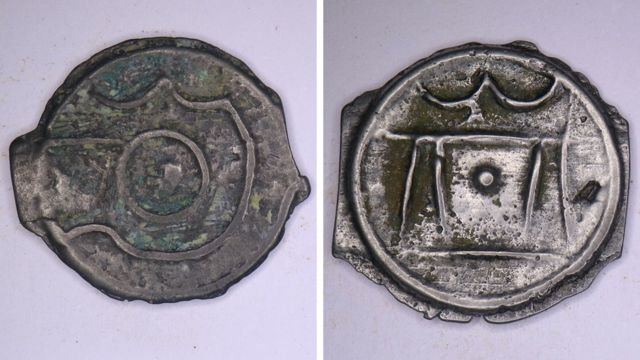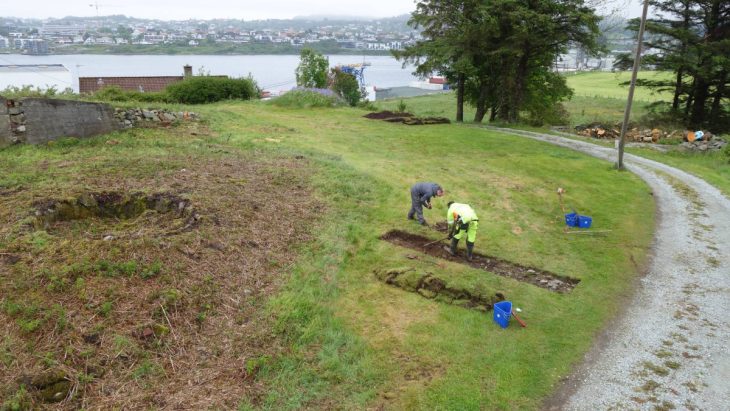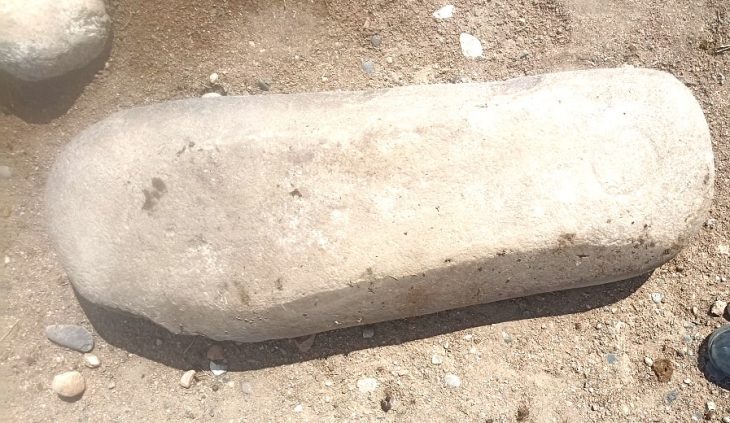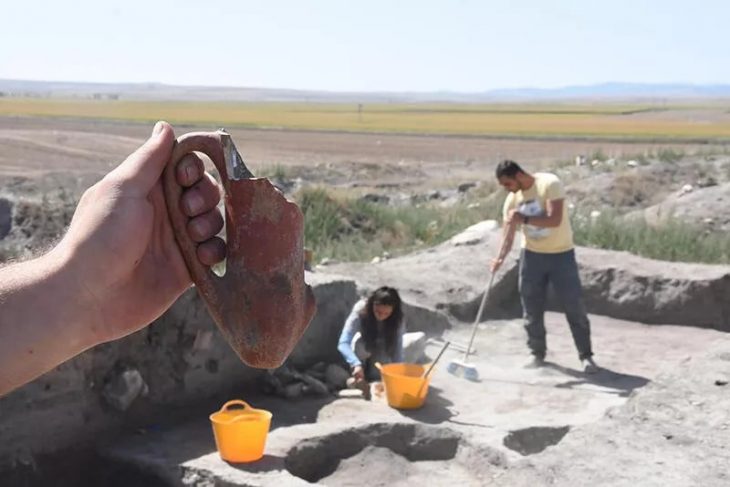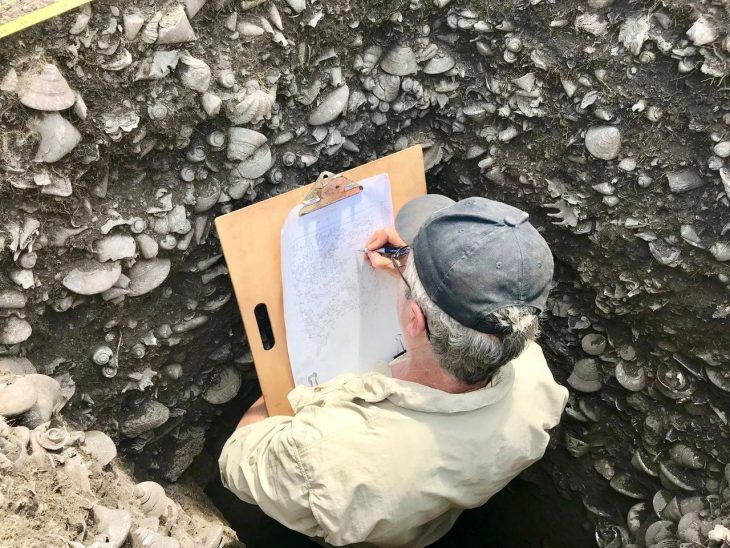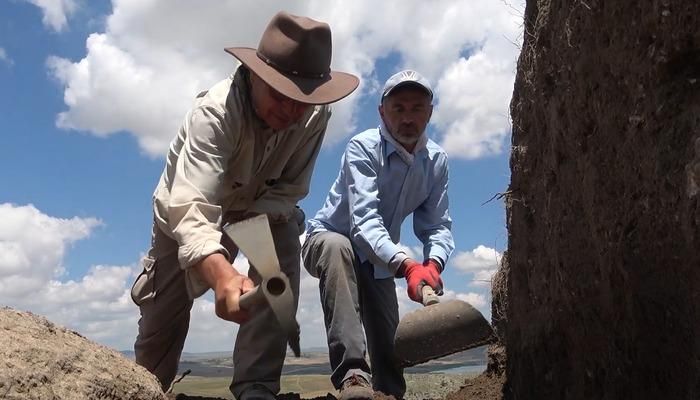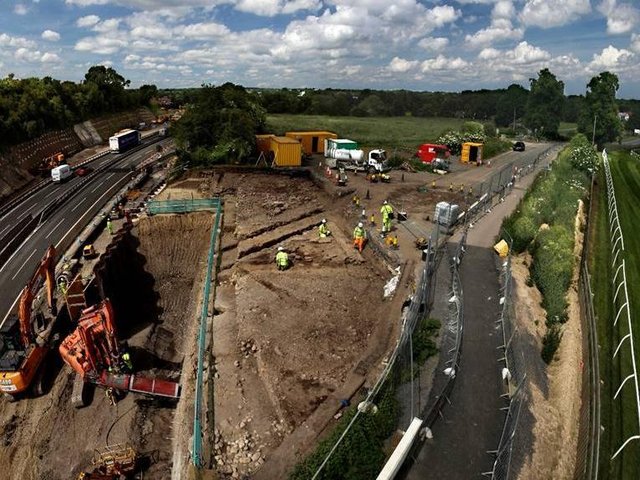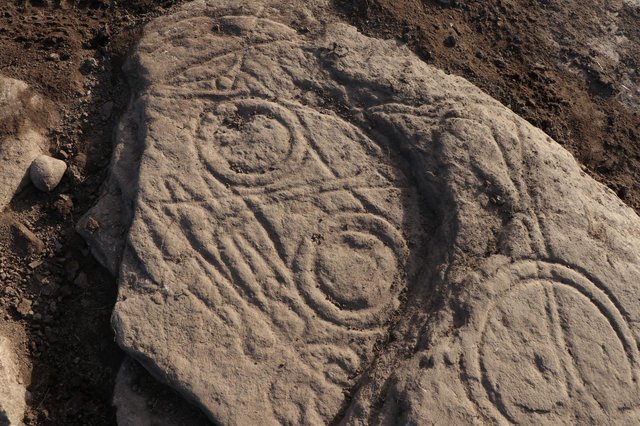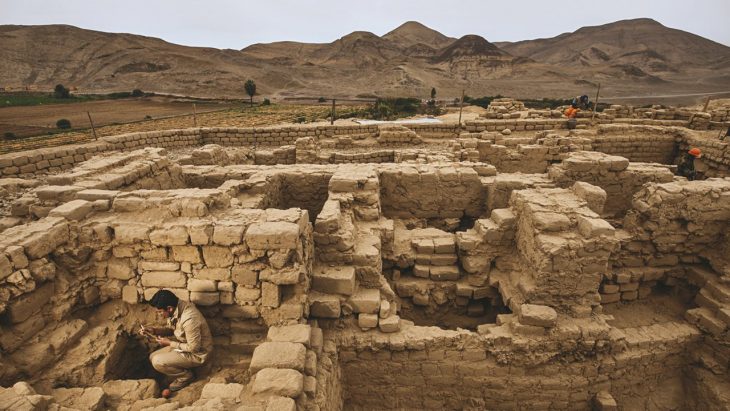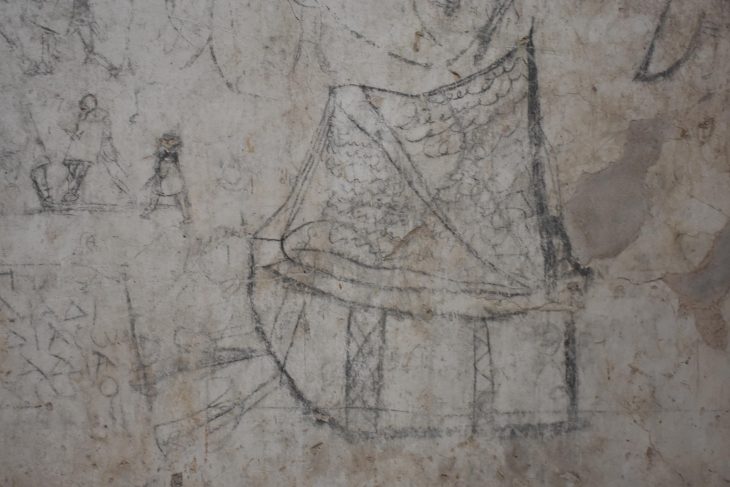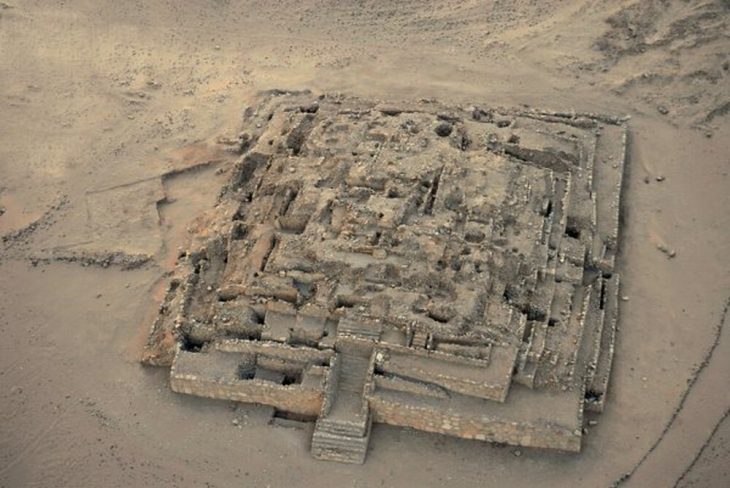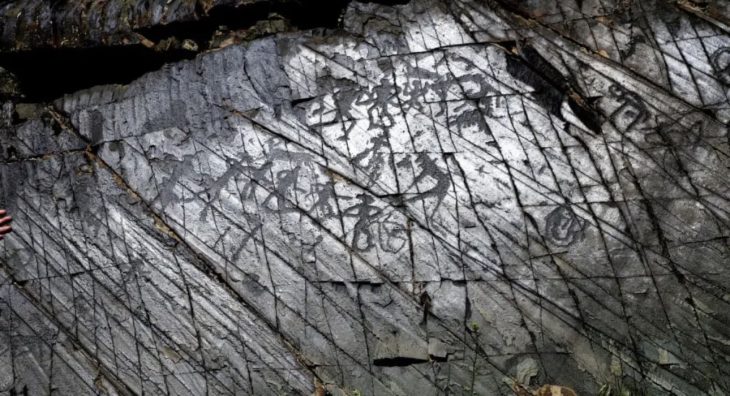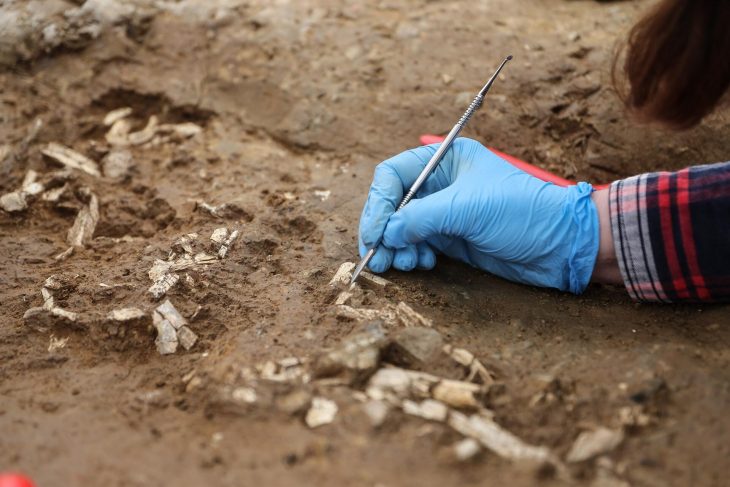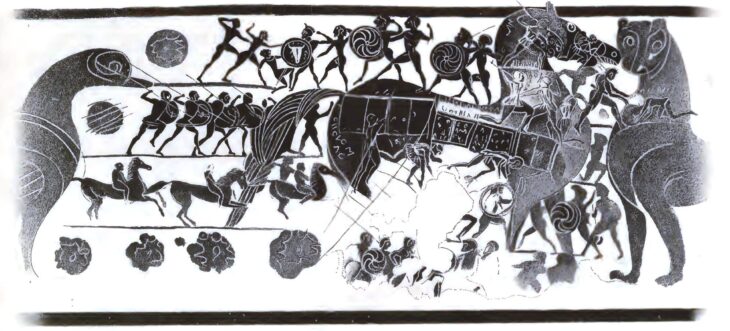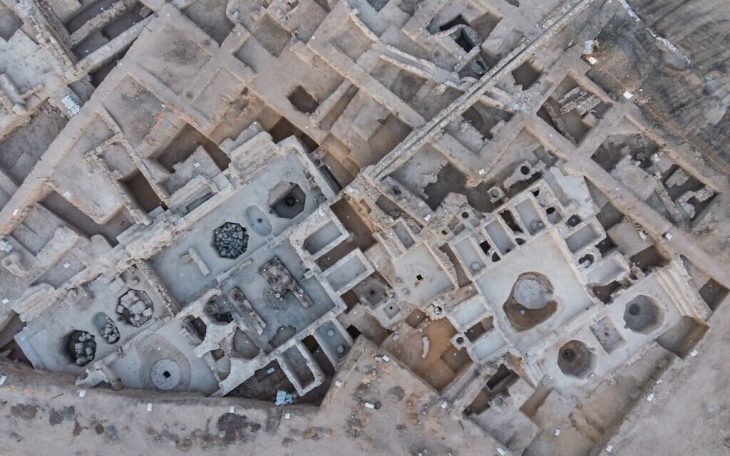Archaeologists at an HS2 construction site in Hillingdon, West London discovered an astonishing treasure of over 300 Iron Age ‘potins”.
The potins found are an early coin dating back to the 1st century BC. The catch has been called ‘The Hillingdon Hoard’ and dates to the late Iron Age which was a time of great change as Romans began to settle in Britain creating Londinium.
The 300 coins are that was discovered in August 2020, and the find is likely to be classified as “treasure” under British law.
In England, the potins have been linked to Kent, Essex, and Hertfordshire. The term “potin” refers to the base metal, which is often a silver-like alloy used in coins and is typically a mix of copper, tin, and lead.
It is unclear what potins were used for throughout the Iron Age period, as the trade of goods and services, as well as bartering, were thought to be the primary modes of commerce. It is also unknown why and where the coins were lost.
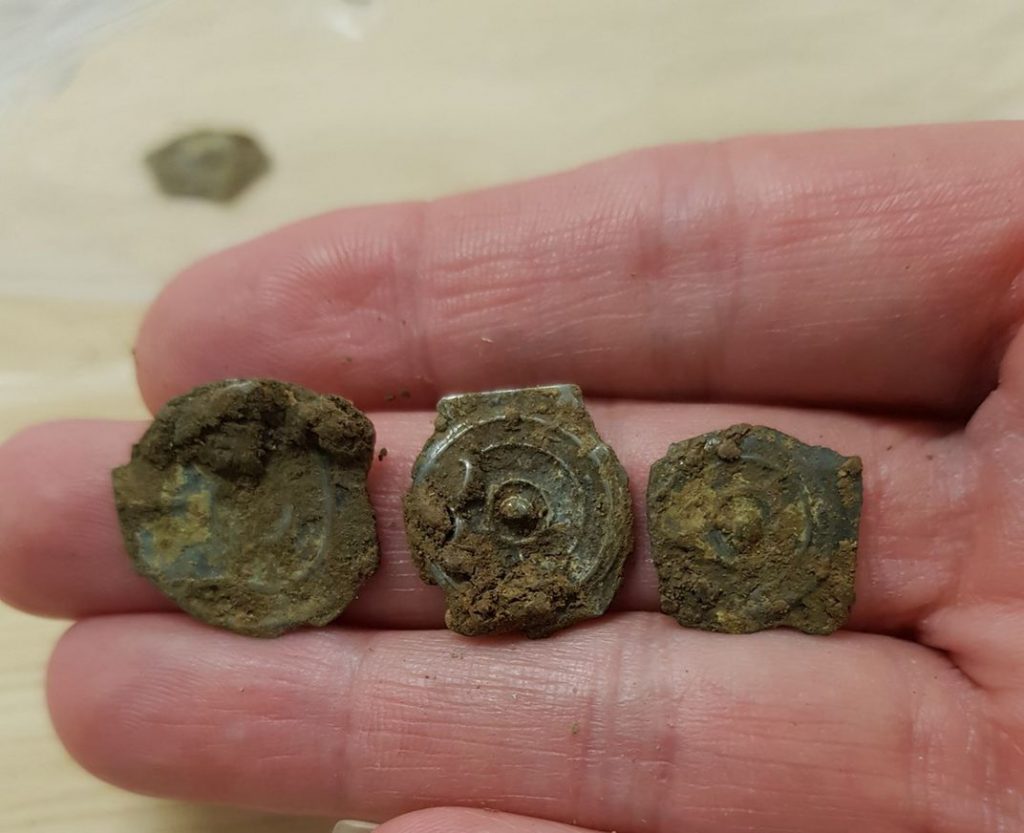
On one coin is the left-facing head of the Greek deity Apollo, while on the other is a charging bull to the right. The potins are considered to be based on coins produced around 2,175 years ago in Marseille, France, and that these early coins were likely circulated throughout northern Europe.
The potins might have defined a property border or possibly been a sacrifice to the Gods, according to archaeologists investigating the find. It’s not uncommon to come such a hoard in what appears to be a remote area, since they might have been kept as savings or as an emergency hoard for times of crisis.
The first potins created in Britain were known as Kentish Primary or Thurrock kinds, and they were most likely made no later than 150BC. Before the year 100 BC, these bulkier coins were replaced with thinner, less detailed coins known as Flat Linear kinds.
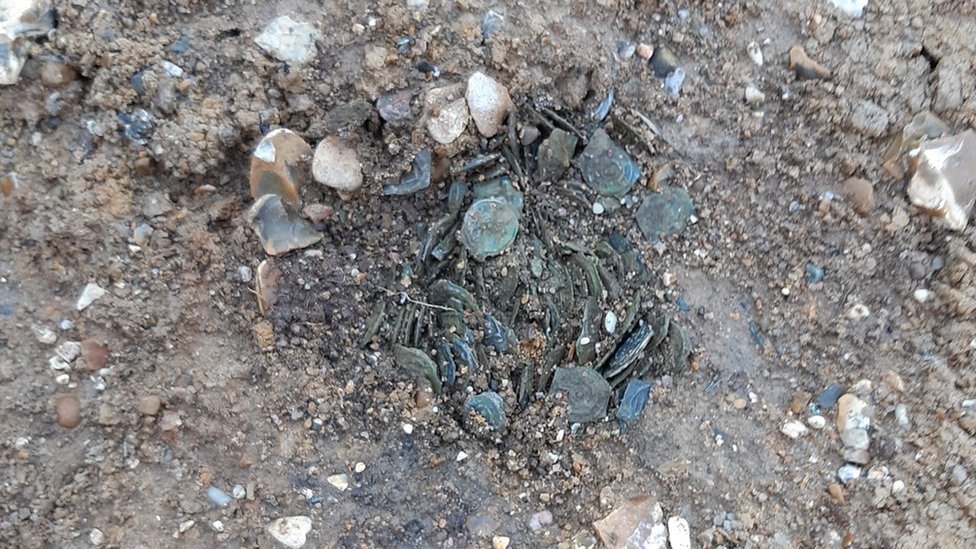
Flat Linear potins gradually evolved into a range of forms over several decades, with the image of the bull and the head of Apollo becoming better stylized, and it is this type of potin that was discovered in the Hillingdon Hoard.
The Hillingdon site was being excavated and examined by the Costain Skanska joint venture, which is the enabling work contractor for HS2 (CS JV). The coins were discovered when a storm altered ground conditions, revealing a different color area of dirt where the coins were hidden.
Because of the significance of the find and the vast quantity of coins, a local coroner was notified, and he will evaluate if the find qualifies as “treasure” after consulting with the British Museum. The potins have been transferred to Birmingham Museum and Art Gallery, where they will be cleaned.
HS2 has collaborated with Historic England to develop a method for archaeological work that ensures the site has been properly surveyed to locate, conserve, and study any relevant archaeology before construction begins.
HS2 will participate in the Festival of Archaeology 2021, which began on Monday, July 19th, with a series of webinars that members of the public may register for to learn more about the Hillingdon Hoard and other intriguing finds.

